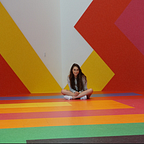When a design project, or any project, gains momentum, it is easy to find oneself surrounded by ideas with no clear path forward.
A design method my team used that I found particularly helpful for taking the next step in the design process and transitioning from ideation to prototype development was the Concept Capture.
The Concept Capture is composed of four quadrants, each focusing on a different aspect of your idea.
The first quadrant focuses on the “who” of the idea. For this project, there were a few whos. We narrowed our focus to Ecorise students, who consist of diverse kids from groups that are currently underrepresented in sustainability who are preparing to apply for college/plan their entrance into the workforce.
The next step is to name the concept and create a simple description. The name doesn’t need to be finalized, it is just meant to help solidify the team’s direction and get people thinking towards realizing a product instead of brainstorming ideas. Our initial name was a half pun, “kit ahead,” which would be a kit that facilitates mentorship in the transition period between high school and post high school plans.
The purpose of the next box is to identify and describe the functionality you wish to test within the prototype. We focused on aspects such as card categories (financial literacy, self advocacy, future plannning), ease of interaction, effectiveness of facilitation, and perceived value to mentors and mentees.
Lastly, we developed a couple of key goals we hope our solution will accomplish in the long run. My group’s goals were to address the knowledge gap that exists between students and adults through successful mentoring and in turn empowering underrepresented student groups to break down the systems barriers they face in finding careers, specifically in sustainability. We ended up deciding that we had a product with the potential to reach way more than just our client, so we changed from this a bit — we expanded it to career access and preparation in general and making an expansion set about sustainability instead of limiting ourselves in scope.
Advantages of this method are that it allows the team to come together and focus on their idea before moving on to prototyping. It allows everyone to have input on the direction of the prototype and the combination of ideas.
Disadvantages of the method are that you need to have a collective idea of your idea before your start. The team needs to be on the same page about the project, stakeholders, goals, and action items before you can move on from this method. If your team cannot agree on how to combine ideas into a single concept or you are struggling to develop your idea further and/or are struggling to surface the assumptions you are making, or cannot describe your idea in terms of a timeline, you will be unable to create an effective low resolution prototype to test the assumptions your team is making,
